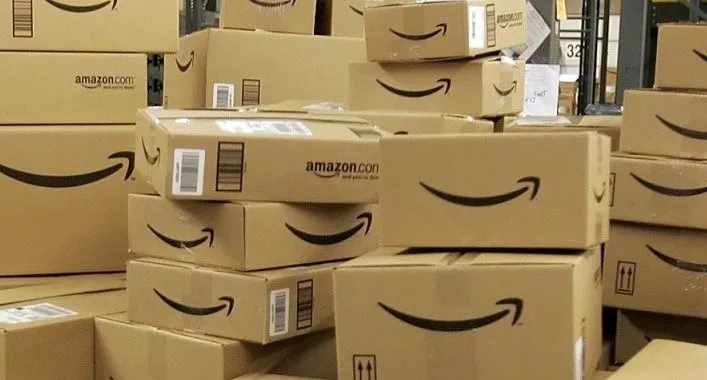“Pricing is at the sole discretion of the retailer”
As a Buyer, I would often get emails from manufacturers with this quietly stated in the signature line of every email. A gentle reminder that pricing is a “no no” topic, illegal to discuss between manufacturer and retailer. Yet it is the key driver of Amazon’s automated pricing system that in turn can move items from profitable to unprofitable based on any pricing movement their bots detect in the marketplace. CRaP is Amazon’s affectionate term for “Can’t Realize A Profit”. This article written by Andrea Leigh (a fellow ex-Amazonian) is a good refresher for a further definition.Often, manufacturers blame Amazon for not upholding their suggested pricing but really,
Amazon is a gigantic magnifying glass amplifying focus on a manufacturer’s unclean distribution channel and inability to control product once it leaves their ownership.
Years of supply chain and logistics pre-Internet have developed processes that are now inefficient and sometimes archaic (don’t worry, the ecommerce movement is working on making brands fix that!).
Consumer Packaged Goods, with their traditional thin margins, are especially hit hard living in this highly variable online world. Take for instance a new product launch of a conventional bottle of soap (heavy, low cost to weight ratio):

Let’s say the cost to Amazon is $9.99. It launches on Amazon at MSRP of $15.99. It quickly price matches (offline pricing) Walmart and moves to $9.97. Target initiates a $2 coupon which is incorporated into its displayed price – Amazon price matches Target down to $7.99. A planned Amazon VPC (Vendor Powered – and funded – Coupon) of an additional $2 off (applied at time of checkout) means the customer can get this new product at an amazing low price of $5.99. All the deal sites pick this up, everyone buys this amazing new product from Amazon, making Amazon’s profitability situation even worse because there’s so much volume. It’s #1 on that buyer’s business review report of CRaP. Within a month, this new item has been CRAPPED out.What is a manufacturer to do given you can’t change your whole business model overnight? The following are a few short and longer term solutions that many in the industry are starting to implement:
1) Implement MAP Pricing: MAP pricing stands for minimum advertised price. These are policies that companies establish declaring the minimum prices at which authorized sellers are permitted to advertise their products. More and more categories that have never had a MAP policy are turning to one as a means to help their online profitability and pricing. Just be prepared to actually monitor and enforce a MAP policy (which is a lot of work). And, Amazon hates these.
2) Think twice before doing deals: Excited about finally getting your sku into Costco? You’ve created a club pack and convinced Costco to buy into it – you just had to sacrifice significant margin and give them a killer cost (better than anywhere else), but you know the volume will more than make it up. Guess what winds up being the #1 sku in your category on Amazon? Your club pack that arbitragers have picked up and are reselling online. Ensure you understand the wide impacts when you offer significantly better costs to one customer.
3) A Hybrid 1P and 3P account: When you sell directly to Amazon and Amazon resells your products to their customers, you are in a 1P, direct relationship. 3P is the third-party marketplace where you leverage Amazon’s traffic, list your products, control pricing, fulfill orders, and Amazon takes a % of each sale. Given Amazon’s automated pricing and inventory systems, some brands are turning to a hybrid approach to have a fall back 3P offer when Amazon runs out of stock, and to sell products that have been CRAPPED out. Is this a “blessed” approach at Amazon? It depends on the category (and how big a brand to Amazon you are). Each Category Leader sets their own rules so it’s important to know your category’s stance. If your product gets CRAPPED out and then you list that product at a higher retail price on Amazon where you can be profitable, Amazon’s brand equity is impacted (they are now not price competitive with the market. However, because you are the seller not Amazon, there is potentially an argument for you for this strategy).
4) Shift Mix to More Profitable Brands and even SKUs: If you have a sku or brand intensive portfolio on Amazon, the chances are some items/brands are more profitable than others. Unfortunately, Amazon does not see you as a “portfolio” where some items can be loss leaders and others make up for it but the holistic manufacturer level is overall profitable. Each item has to stand on its own. In the short term, look to drive more volume to your profitable lines even to the sku level through marketing efforts (programs, paid search, display advertising). Meanwhile, dig into the negative cost drivers of your unprofitable items that are important to you and look for efficient ways to get those items more profitable.
5) Fund your way or Lower your cost: Amazon will always take your money and will definitely ask you for more money. They will tell you how much they need you to either lower your cost to them or “fund” on a per unit basis in order to remain on the platform. This is typically not a sustainable model for you but potentially a short term fix as you work on longer term solutions. It’s better to “fund” than lower cost as it’s very difficult to increase your costs later.
6) Allow an Amazon subsidiary to do the volume for you: When your item gets CRAPPED out, you may still be able to have an offering on the Amazon platform through another customer that is an Amazon owned subsidiary who is also an Amazon third-party merchant such as Quidsi (Soap.com, Diapers.com, Wag.com, etc). Offers through Quidsi are Prime eligible and FBA (fulfilled by Amazon). If your item gets CRAPPED out and you have a type of product a subsidiary sells, look to get your item listed with them if they are not already:

In the above example, extremely heavy liquid laundry detergent 141 oz is still able to have an offer through Quidsi which is Prime eligible and fulfilled by Amazon but there is no Amazon, direct offer.
7) Lower Outbound Shipping Costs: one of Amazon’s greatest costs is getting that product to its customers. As more households adopt Prime (now 37% of US households according to Kantar), these costs will continue to increase. Until drones deliver products and Amazon owns the shipping channel, this will continue to be a pain point especially for heavy products. A few things you can do:a) Subscribe & Save – if your products are replenishable, ensure eligible items are enrolled in the subscribe & save program. SNS enables products to ship the slowest/cheapest way possible to customers (and especially prime members) which in the end saves Amazon money. Also, Amazon doesn’t like to take items off SNS and upset their loyal customers so it can serve as a (thin) protective layer between you and the CRaP list.b) Provide Ship In Own Container (SIOC) packaging – the less time and additional packaging Amazon has to spend repackaging your products to customers, the more cost effective it is to them.
8) Increase distribution to other platforms on Amazon – Prime Pantry, Amazon Fresh, and Prime Now all have different economic models that may be a home for your CRAPPED out items.
9) Design for Online – create a new brand! While you are doing #1-#8, consider creating a new brand for online that ships in its own container, has high margin, light weight, and everyone will want. Easy, right?! Emerging brands on Amazon like Pura D’Or, Kind, Bai, and others are designing for online and reaping the benefits while their conventional counterparts are struggling through the CRaP list.
These are just a few ways to think about ways to succeed online. I’d love to hear from you if you want to discuss more on this topic, need help, or want to share your experiences!
















